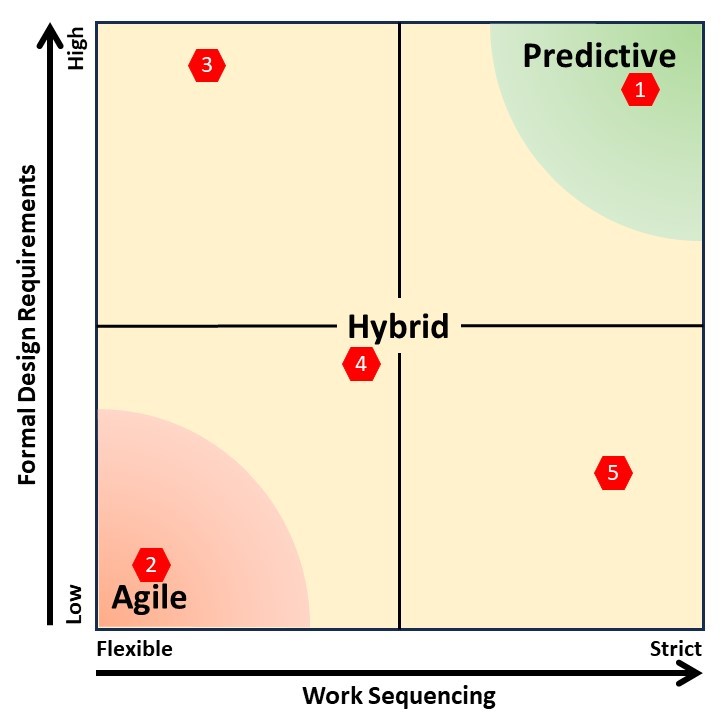The term ‘waterfall’ is seen in lots of different posts without any clear definition of what the writers of those posts mean by the term. The only constant seems to be in each of the writer’s view ‘waterfall’ is not Agile, and generally represents bad project management practice. In summary, the agile advocates view seems to be:
Agile: A well-defined flexible project delivery process, based on the Agile Manifesto, applicable to software development and a wide range of other “soft projects” such as business change. Agile = Good!
Waterfall: Any project delivery process that is not Agile. Waterfall = Bad!
There are many problems with this simplistic viewpoint starting with the fact the concept of ‘waterfall’ had a very short life and with the possible exception of a few, very traditional, software development organizations, no one uses waterfall for anything.
History of Waterfall.
To the best of my knowledge, the first publication to use the term Waterfall was in the 1976 paper Software Requirements: Are They Really a Problem, by T.E. Bell and T.A. Thayer. This paper misrepresented the 1970 paper Managing the development of large software systems, by Dr Winston Royce[1]. Royce proposed an iterative approach to the development of large systems, but Bell and Thayer falsely claimed he supported ‘waterfall’[2].
Summary diagram from Royce 1970.
The real start of Waterfall was the publication in 1988 of DOD-STD-2167A by the US Department of Defense, which established uniform requirements for the development of software based on the Waterfall approach[3].
Extract from DOD-STD-2167A
Problems with the Waterfall approach were quickly identified and in 1996 MIL-STD-498 was released by the US Department of Defense to correct the problems. Officially Waterfall was dead and buried but many companies had adopted waterfall and because waterfall projects were slow and subject to delay, hourly paid staff and contractors had a powerful incentive not to change despite many better software development processes being developed starting from the early 1980s.
Other types of projects and project delivery.
Waterfall was a short-lived software development methodology. The vast majority of projects in the construction, engineering, oil & gas, defence, and aerospace industries use project delivery methods based on the approaches described in A Guide to the Project Management Body of Knowledge (PMBOK® Guide)—Sixth Edition, and a range of other standards. These other projects generally have three phases:
- A definition phase undertaken by the client organization to define the capabilities of the product being developed
- A procurement phase where the client selects a delivery agent for the development of the product
- A delivery phase where the delivery agent builds and delivers the product
The design of the product (ship, building, rocket, etc.) may be undertaken in full or in part during any one of the three phases. A minimum level of design is required to initiate procurement, but for simple buildings and civil engineering projects, it is not unusual for a complete design and specification to be provided by the client.
The procurement phase may be a simple pricing exercise, or a complex, and phased, design process (sometimes even involving the production of working prototypes), with selection being based on the capabilities of the design produced by the successful tenderer.
Then, in many projects, a significant amount of detailed design is still required during the delivery phase, including shop drawings produced by subcontractors and suppliers.
Similarly, the procurement arrangements vary widely. The client may choose to enter into some form of alliance or partnership with the preferred delivery agent based on shared risk and profits, or the client may choose a hard-dollar contract based on a fixed price to deliver a fixed scope, or some other form of contractual arrangement.
The only certainties are that the typical project approaches used for the vast majority of ‘other’ projects bear no resemblance to the waterfall approach, and this ‘other’ classification includes more than two-thirds of the world’s projects by value.
Conclusions
- I suggest it is time to follow the US DOD lead from 1994 and bury the concept of ‘waterfall’ – using the name 30 years after it was officially dropped is long enough.
- People involved in the ‘Agile’ industry need to wake up to the fact that software development is only one of many types of project. Most of the ‘other’ types of project do not use Agile, and they certainly don’t use waterfall.
- Agile and agility are not synonymous – all organisations benefit from a degree of agility, but this has nothing to do with selecting the best project delivery methodology (more on this later).
- In the 21st century, Waterfall is not synonymous with over documentation and/or bad project management. There is plenty of bad project management practice around. But bad management needs to be called out for what it is – 99.999% of the time the bad managers are not trying to use waterfall in their work.
Ditching the concept of waterfall does create a couple of challenges – we all have an understanding what Agile means as a project delivery process, we need similar generally accepted classifications for other types of project delivery – more on this later. Similarly, the bad management practices branded as ‘waterfall’ need to be identified and understood, you cannot improve a bad process until the root cause of the problem is understood.
For more on Agile management see: https://mosaicprojects.com.au/PMKI-ITC-040.php#Process1
Note: THE MYTH OF THE ‘WATERFALL’ SDLC by expands on this post in far greater detail and is highly recommended as a reference: http://www.bawiki.com/wiki/Waterfall.html
[1] Download a copy of the 1970 Royce paper: https://mosaicprojects.com.au/PDF-Gen/Royce_-_Managing_the_development_of_large_software_systems.pdf See Fig. 10.
[2] Download a copy of the 1976 Bell & Thayer paper: https://mosaicprojects.com.au/PDF-Gen/software_requirements_are_they_really_a_problem.pdf
[3] Download DOD-STD-2167A Defense System Software Development (1988): https://mosaicprojects.com.au/PDF-Gen/DOD-STD-2167A.pdf


















